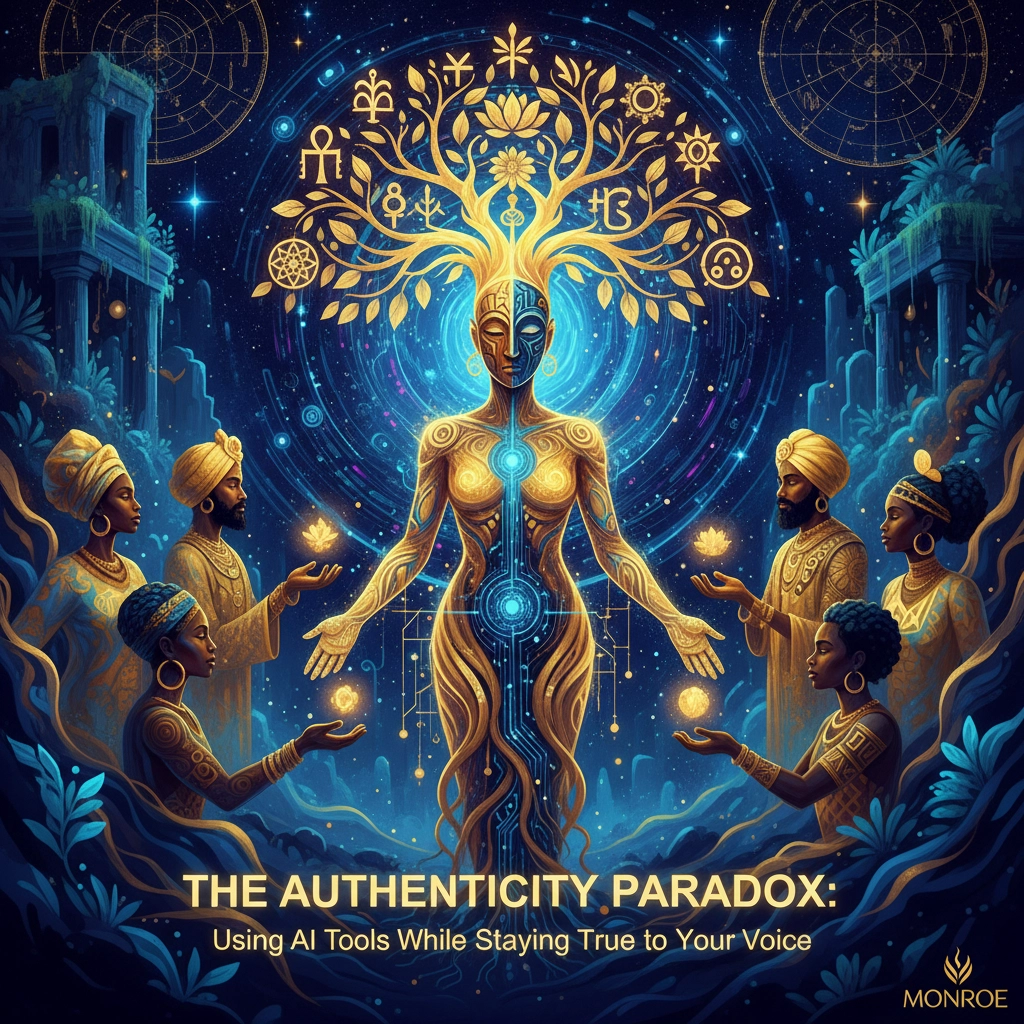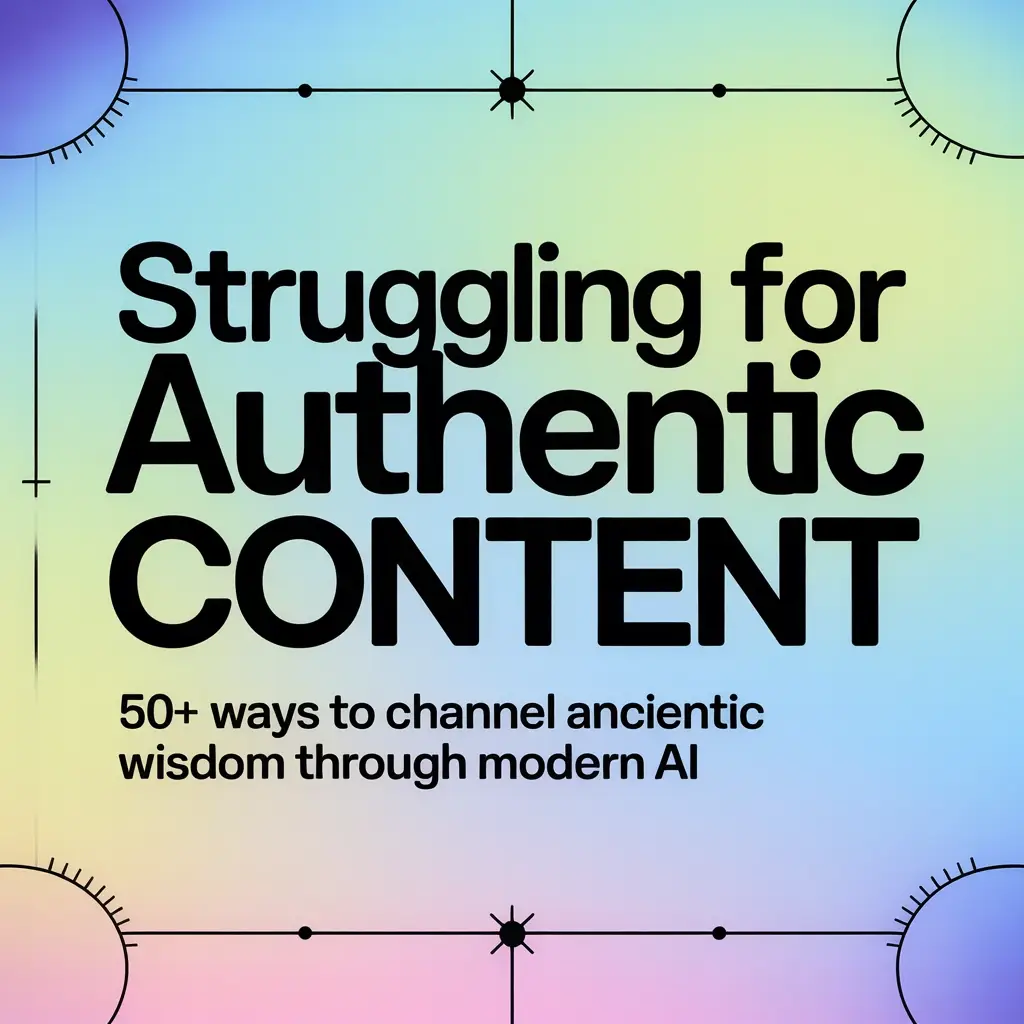The authenticity paradox presents a straightforward problem: artificial intelligence tools can help create content that feels genuinely human, despite being fundamentally artificial. This contradiction affects every content creator using AI tools today.
Most creators face a choice between efficiency and authenticity. AI tools offer speed and consistency. Human writing offers genuine perspective and emotional depth. The solution requires combining both approaches strategically.
Current State of AI Tool Usage
AI writing tools have become standard across industries. Marketing teams use them for social media posts. Bloggers use them for article outlines. Business owners use them for email campaigns. The technology has matured beyond simple text generation.

Research shows that AI exposure increases writing length by 166% on average. People produce more content when AI assists them. However, quantity does not equal quality. Much AI-assisted content lacks distinctive voice and perspective.
The convergence problem creates additional challenges. When everyone uses similar tools trained on similar data, content begins to sound identical. Readers notice this sameness. Brand differentiation becomes harder.
Why Authentic Voice Matters
Authentic voice creates trust with audiences. People connect with genuine perspectives and personal experiences. These elements cannot be replicated by algorithms trained on existing content.
Your voice includes specific elements:
- Personal anecdotes and experiences
- Unique perspectives on common topics
- Distinctive word choices and phrases
- Consistent tone across different contexts
- Cultural references and background knowledge
AI tools lack consciousness and lived experience. They cannot infuse content with genuine emotions or personal insights. This limitation creates opportunities for human creators who understand their own voice.
Common Challenges with AI-Assisted Content
Most creators encounter similar problems when using AI tools:
Loss of Personal Style: AI tends to produce generic, corporate-sounding content that lacks personality.
Over-reliance on Tools: Some creators let AI generate entire pieces without adding personal input or perspective.
Inconsistent Voice: Switching between AI-generated and human-written content creates jarring transitions for readers.
Verbose Output: AI often produces unnecessarily long content that dilutes key messages.
Lack of Original Insight: AI recombines existing information without adding new perspectives or analysis.

Practical Strategies for Maintaining Voice
Successful creators use AI as a collaborative tool rather than a replacement for human thought. This approach requires specific techniques and boundaries.
Strategy 1: Voice Development First
Define your authentic voice before using AI tools. Document your writing style, preferred words, and typical sentence structures. Create a voice guide that includes:
- Sample sentences in your style
- Words and phrases you commonly use
- Topics you frequently discuss
- Your typical approach to explaining complex ideas
- Examples of your humor or personality in writing
This documentation provides a reference point when editing AI-generated content.
Strategy 2: Structured AI Collaboration
Use AI for specific tasks while maintaining human control over core elements:
Research and Idea Generation: Let AI suggest topics, gather information, and propose content structures. Review and select ideas that align with your expertise.
First Draft Creation: Use AI to create basic outlines or rough drafts. Focus on getting ideas onto paper quickly.
Content Expansion: Ask AI to elaborate on specific points you want to develop further. Provide your own insights and experiences as context.
Editing and Refinement: Use AI to suggest improvements in clarity, grammar, and flow. Make final decisions about tone and voice.
Strategy 3: Layered Editing Process
Implement a systematic editing process that preserves your voice:
- AI Draft Review: Identify sections that sound generic or off-brand
- Voice Integration: Rewrite key passages in your authentic style
- Personal Addition: Add specific examples, anecdotes, or insights only you can provide
- Consistency Check: Ensure the entire piece maintains consistent tone and perspective
- Final Polish: Make language choices that reflect your typical writing patterns

Specific Tools and Techniques
Different AI tools serve different purposes in maintaining authentic voice:
Writing Assistants: Use tools like Grammarly or Hemingway for grammar and clarity without changing your core message.
Research Tools: Leverage AI for gathering information and statistics that support your unique perspectives.
Content Outliners: Use AI to suggest article structures, then fill in sections with your own insights and experiences.
Tone Analyzers: Some tools can help identify when AI-generated content doesn't match your typical writing style.
Transparency and Trust Building
Consider disclosing AI tool usage when relevant. Transparency builds trust with audiences who value authenticity. This disclosure can be brief and factual rather than apologetic.
Examples of effective disclosure:
- "Research assisted by AI tools"
- "Draft created with AI assistance, edited for voice and accuracy"
- "AI tools used for initial research and outline development"
The key is honest communication about how tools support rather than replace human insight.
Measuring Authentic Voice Success
Track specific metrics to ensure AI tools enhance rather than diminish your voice:
Engagement Metrics: Monitor whether AI-assisted content receives similar engagement to fully human-written pieces.
Reader Feedback: Pay attention to comments about content feeling "off" or different from your usual style.
Brand Consistency: Regularly review content to ensure consistent voice across different pieces and platforms.
Personal Satisfaction: Consider whether the content accurately represents your thoughts and expertise.

Implementation Framework
Start with a gradual approach to AI integration:
Week 1-2: Use AI only for research and idea generation. Write all content manually.
Week 3-4: Experiment with AI-generated outlines while writing sections yourself.
Week 5-6: Try AI-assisted drafting with extensive editing and voice integration.
Week 7-8: Develop a repeatable process that consistently produces content in your authentic voice.
This framework allows for adjustment and refinement without compromising voice development.
Long-term Considerations
The authenticity paradox will continue evolving as AI tools improve. Focus on developing skills that complement rather than compete with AI capabilities:
- Deeper subject matter expertise
- Unique personal perspectives and experiences
- Emotional intelligence and empathy
- Strategic thinking and analysis
- Creative problem-solving approaches
These human elements become more valuable as AI handles routine content generation tasks.
The authenticity paradox resolves through intentional practice and strategic tool usage. AI can enhance authentic voice when used thoughtfully. The goal is not avoiding AI tools but using them in ways that amplify rather than replace genuine human perspective.
Success requires ongoing attention to voice consistency and reader needs. Regular review and adjustment ensure AI tools serve your authentic communication goals rather than undermining them.



